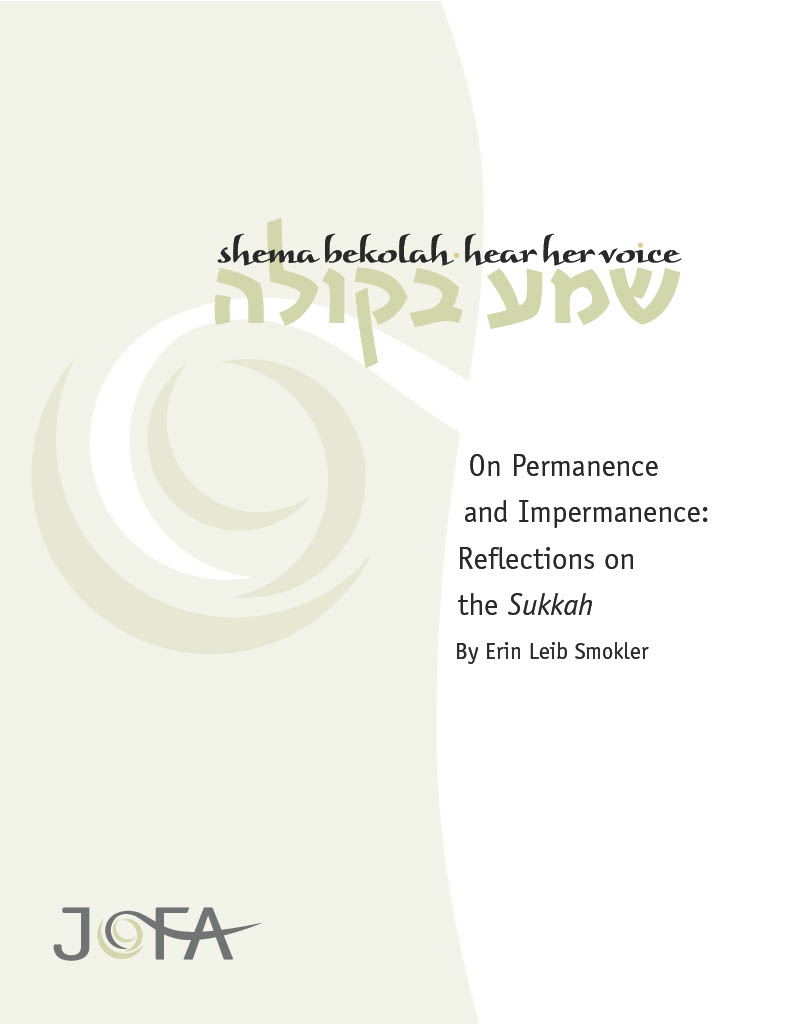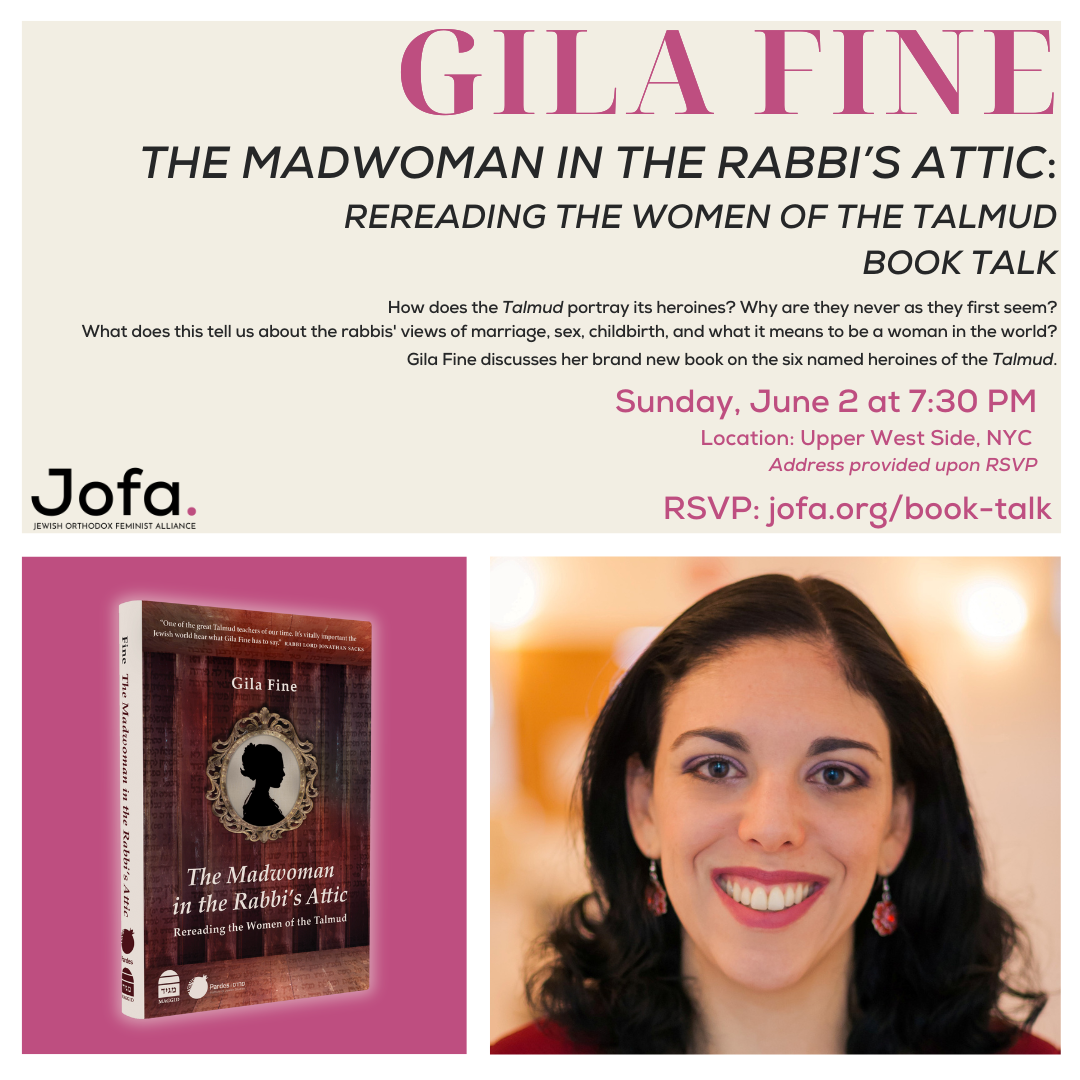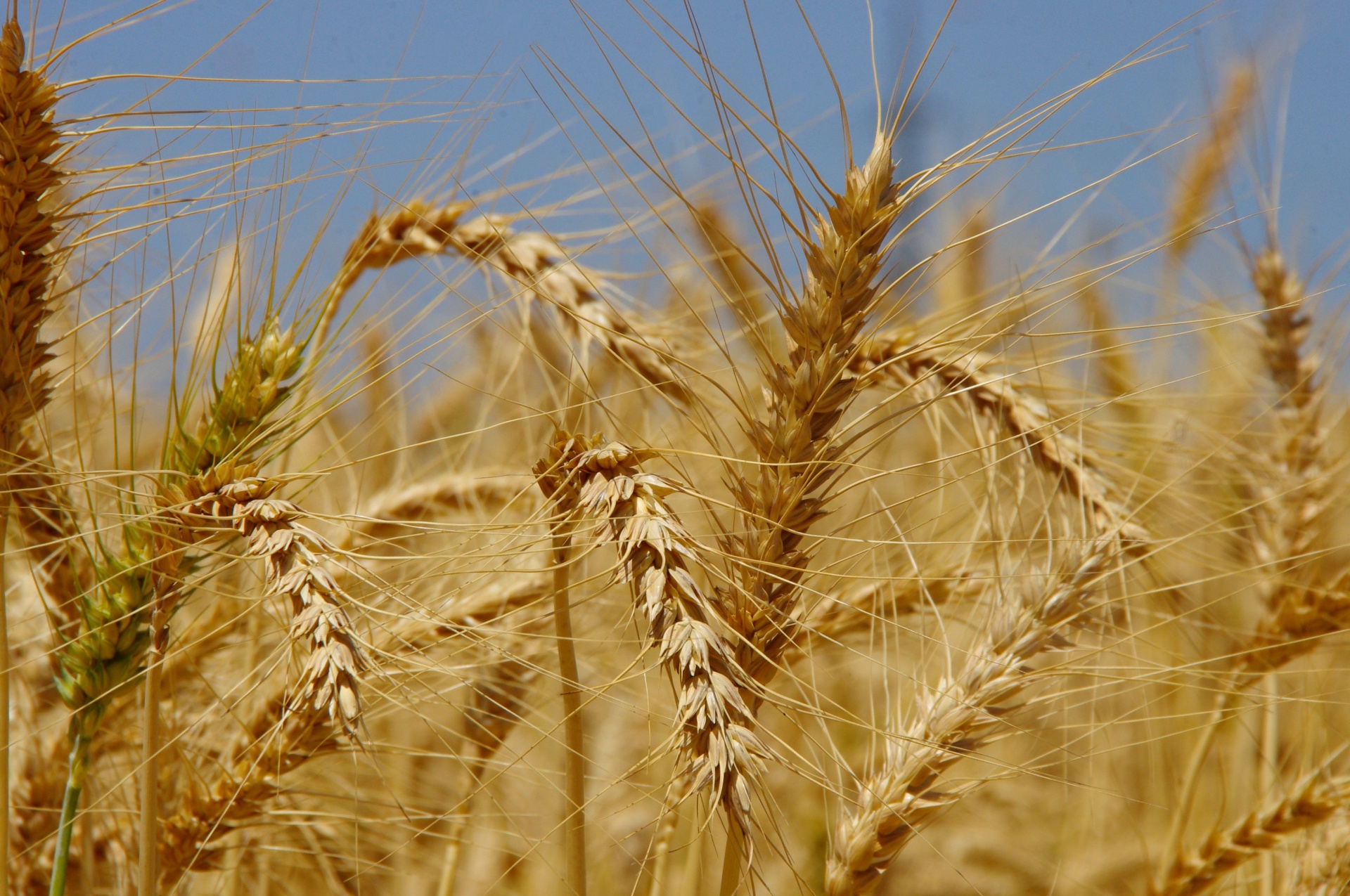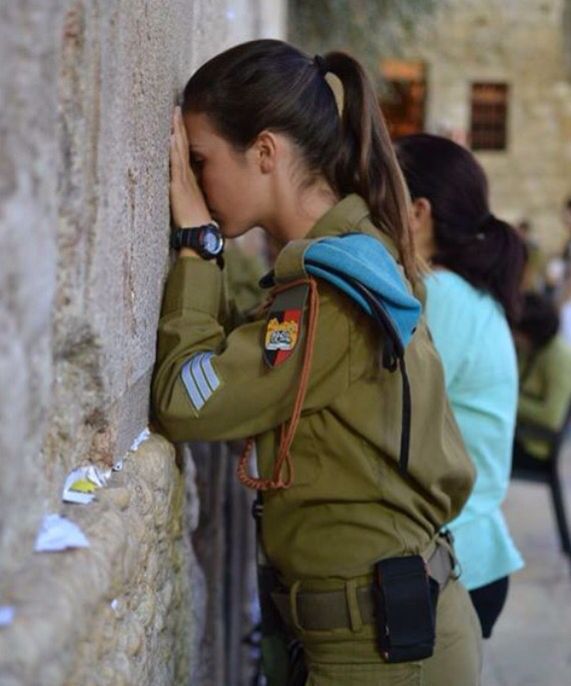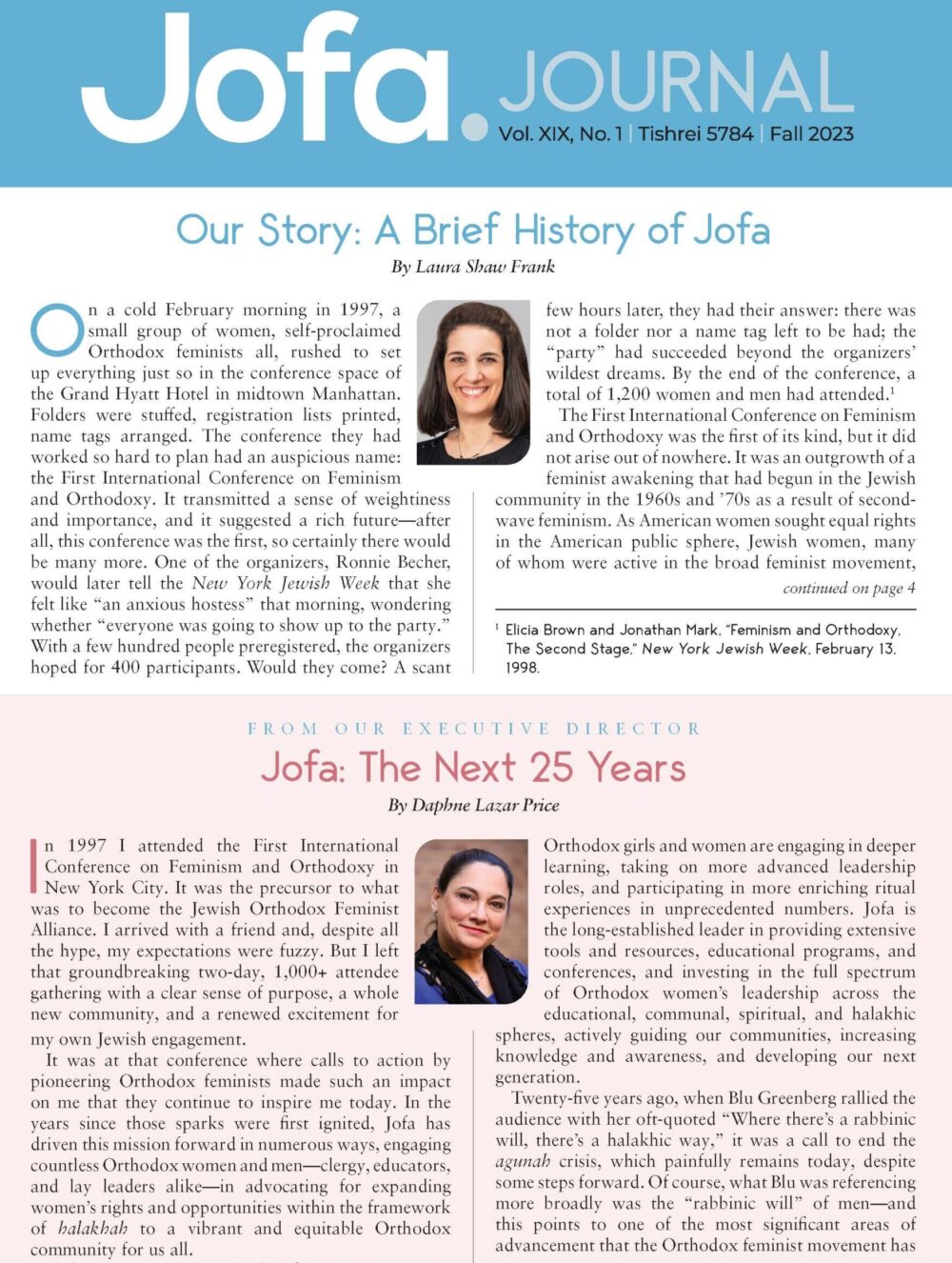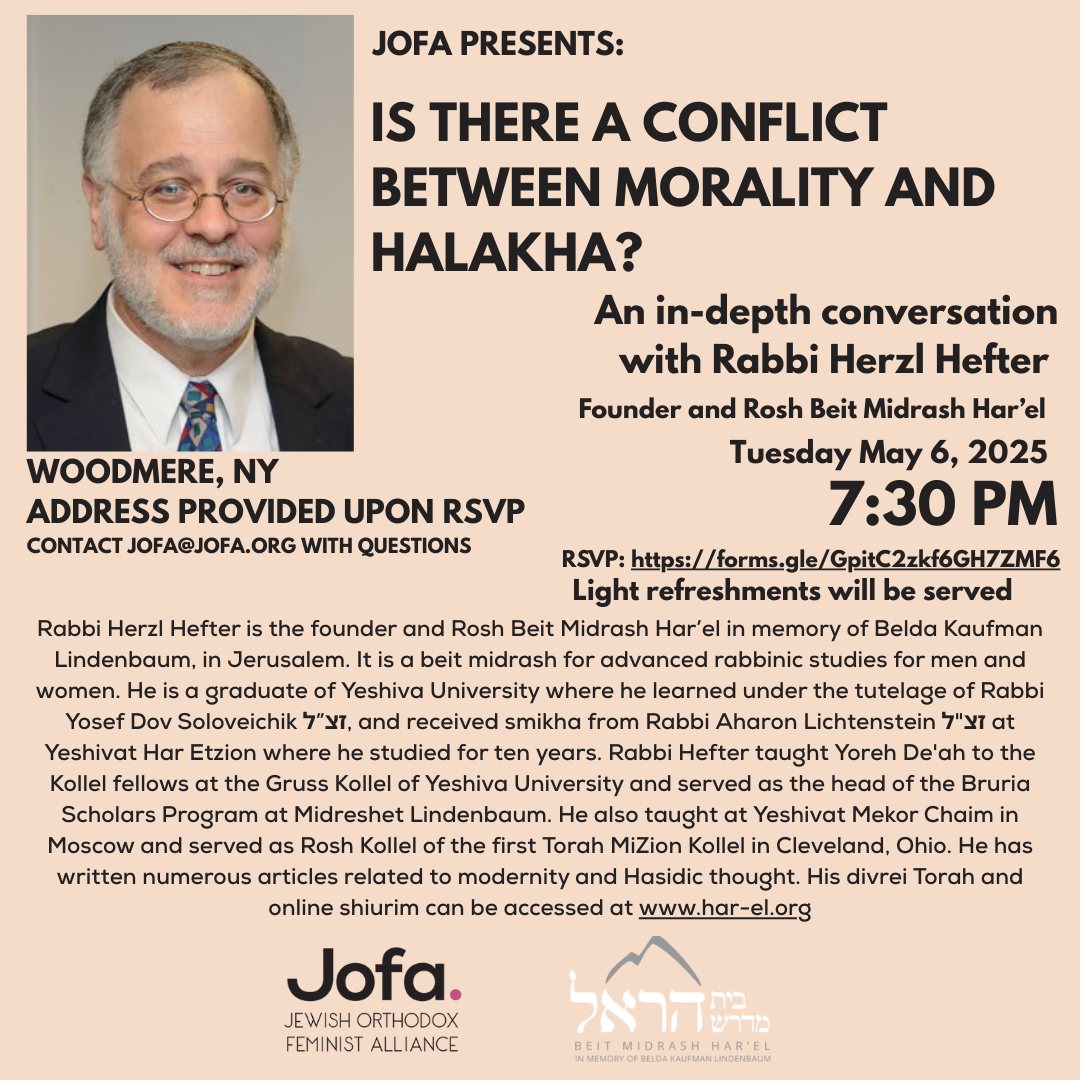By Erin Leib Smokler [1]
The holiday of Sukkot is famously one of joy. The Torah exhorts us “וְשָׂמַחְתָּ֖ בְּחַגֶּ֑ךָ,” “You shall rejoice in your festival” (Deuteronomy 16:14). It then follows with an even more bold demand: “וְהָיִ֖יתָ אַ֥ךְ שָׂמֵֽחַ” — “You shall have nothing but joy” (Deut. 16:15). Our liturgy accordingly refers to the holiday as זמן שמחתינו, the time of our joy. This repetitive, all-encompassing language raises the question: What about Sukkot makes it so uniquely joyous? And just what kind of simha are we after? A close look at the central symbol of the holiday, the sukkah, yields some insight.
The foundational command for the sukkah is found in Leviticus 23:42-43:
בַּסֻּכֹּ֥ת תֵּשְׁב֖וּ שִׁבְעַ֣ת יָמִ֑ים כׇּל־הָֽאֶזְרָח֙ בְּיִשְׂרָאֵ֔ל יֵשְׁב֖וּ בַּסֻּכֹּֽת׃
לְמַ֘עַן֮ יֵדְע֣וּ דֹרֹֽתֵיכֶם֒ כִּ֣י בַסֻּכּ֗וֹת הוֹשַׁ֙בְתִּי֙ אֶת־בְּנֵ֣י יִשְׂרָאֵ֔ל בְּהוֹצִיאִ֥י אוֹתָ֖ם מֵאֶ֣רֶץ מִצְרָ֑יִם אֲנִ֖י יְהֹוָ֥ה אֱלֹהֵיכֶֽם׃
(42) You shall live in booths seven days; all citizens in Israel should live in booths, (43) in order that future generations may know that I made the Israelite people live in booths when I brought them out of the land of Egypt, I the Lord your God.
Clarifying these verses, the Talmud explains:
וְרָבָא אָמַר, מֵהָכָא: ״בַּסּוּכּוֹת תֵּשְׁבוּ שִׁבְעַת יָמִים״. אָמְרָה תּוֹרָה: כׇּל שִׁבְעַת הַיָּמִים צֵא מִדִּירַת קֶבַע וְשֵׁב בְּדִירַת עֲרַאי.
And Rava said, “From the passage, ‘You shall live in booths seven days’ (Lev. 23:42), the Law commanded that, for all seven days, you shall leave your permanent dwelling and live in a temporary dwelling.” (Tractate Sukkah 2a)
The mitzvah of sukkah is here distilled to its essence: The sukkah is a place of impermanence. As we will see, it is a space that is unstable, unrooted, and insufficiently protective. It is ephemeral and fragile, leafy and leaky. In every sense, it is not home.
The halakha cements this insistence on impermanence and instability in both time and space. The first chapters of Mishnah Sukkah illustrate this well. A sukkah must be temporal, we are told, made exclusively for use on the holiday (Mishnah Sukkah 1:1). It must be humble and unmistakable for a home. It therefore cannot be taller than 20 cubits (1:1). It cannot be built within a house or beneath a tree (1:2). Inside of it, one cannot sleep beneath a bed (2:1) nor eat beneath a sheet (1:3). In other words, the sukkah itself must be exposed to the elements and one must be exposed to them while in it.
Augmenting this theme of exposure is the סכך, the flimsy roof of the sukkah that must provide shade but not cover. The סכך must be made of organic matter, grown from the ground, but no longer attached to it (1:4). It cannot be bundled or too wide (1:5-7). That is, it cannot shelter too much. It must leave room to see sky and stars, and thus to endure rain and wind.
In sum, the sukkah — the “דירת עראי,” the dwelling that is no home — must be a vulnerable structure that also generates an experience of vulnerability. One must be ever conscious of impermanence while in its midst. “ צא מדירת קבע ושב בדירת עראי,” said Rava. On Sukkot, one must exit the known world of security, of קבע, and enter a world of insecurity.
And yet, a shocking paradox awaits us at the end of chapter two of the Mishnah. Having established unequivocally the importance of impermanence, an audacious demand is issued:
כָּל שִׁבְעַת הַיָּמִים אָדָם עוֹשֶׂה סֻכָּתוֹ קֶבַע וּבֵיתוֹ עֲרַאי.
All seven days, one must make one’s sukkah permanent and one’s home impermanent. (Mishnah Sukkah 2:9)
That which is quintessentially קבע — home — must be rendered עראי on Sukkot. And that which is quintessentially עראי — the sukkah — must be rendered קבע! That very structure that embodies and engenders the ephemeral is somehow to be given roots. That meek place of exposure is to be embraced as reliable shelter. One must find a way to transform impermanence into permanence.
How? The Gemara explains:
הָיוּ לוֹ כֵּלִים נָאִים מַעֲלָן לַסּוּכָּה, מַצָּעוֹת נָאוֹת — מַעֲלָן לַסּוּכָּה, אוֹכֵל וְשׁוֹתֶה וּמְטַיֵּיל בַּסּוּכָּה. מְנָא הָנֵי מִילֵּי? דְּתָנוּ רַבָּנַן: ״תֵּשְׁבוּ״ — כְּעֵין תָּדוּרוּ,
If one has fine utensils, bring them into the sukkah. If one has fine bedding, transfer it to the sukkah. And one should eat, drink, and walk in the sukkah. Whence is this deduced? From what the rabbis taught: “You shall live [in booths seven days” (Lev. 23:42)]—[Live] as you normally do. (Tractate Sukkah 28b)
To establish the sukkah as a home, one must act as if it is one.
What are we to make of this play between the transient and the intransient? Why would the rabbis go to such lengths to construct a flimsy edifice only to undermine it? What is the meaning of a life lived self-consciously ‘as if’? Herein lies the deep message of the sukkah, and the source of its simha. It is nothing less than a lesson in how to live with integrity in a fragile, uncertain world. At the start of a new year, the sukkah offers habituation into a life lived with eyes wide open.
After Rosh Hashanah and Yom Kippur, with all of their confident declarations — about who God is and who we are, about the justice of the world and the pathways to forgiveness — Sukkot comes to destabilize us. Conviction is surely a great religious value, but certainty is a grave religious danger. At best, it breeds complacence; at worst, hubristic fundamentalism and intolerance. Certainty blinds the mind and locks the spirit. So in a move of dizzying contrast, Sukkot provides an antidote. It comes to remind us that God cannot be fully known, that the ways of the world cannot be fully comprehended, that our own selves cannot be fully pinned down. For existence is fundamentally unpredictable and unstable, or “הבל הבלים,” as Kohelet says, “utterly evanescent” (Ecclesiastes 1:2). The universe is always changing and we are ever in flux, sometimes birthing, sometimes dying; sometimes building, sometimes coming apart (Ecc. 3:2-3).
When we enter a sukkah of instability — where walls are not solid, where we lack a roof over our heads — we are forced to confront our radical exposure. We must acknowledge that we exist in inescapable uncertainty. We must see that we cannot, ultimately, be sheltered. In this experience of raw vulnerability, we are stripped of illusions of permanence and are thrown into consciousness of impermanence. The world, alas, is unmistakably a דירת עראי.
How, then, are we to live? What are we to do with this awareness of הבל? The sukkah offers a profound answer: “תשבו כעין תדורו.” Learn to dwell inside of those fragile places. Make of them a דירת קבע. Act as if you are here to stay. Insist on the wild possibility of building, even on shifty soil. Assert the capacity to make enduring commitments, even in the absence of certainties. Set up a home and beautify it. Invite ushpizin, guests, into it. Create relationships and nourish them. Bring your finest self and your finest stuff into the space that you set up. Feed yourself and those around you. Love with abandon. Invest in a future. Dare to bring new life into this crazy world. And when it rains, offer shelter where you can, knowing all too well that you cannot shield. These are the modest requests of a faithful life.
In the words of Rabbi Jonathan Sacks:
Jewish faith is not a metaphysical wager, a leap into the improbable. It is the courage to see the world as it really is, without the comfort of myth or the self-pity of despair…[2]
Jewish faith is not about believing the world to be other than it is. It is not about ignoring the evil, the darkness, and the pain. It is about the courage, endurance, and the capacity to hold fast to ideals even when they are ignored by others. It is the ability to see the world for what it is and yet still believe that it could be different. It is about not giving up, not letting go. Faith is what the Song of Songs calls “the love which is stronger than death” (Song of Songs 8:6).[3]
Indeed, the challenge of faith, as issued by the sukkah, mirrors the challenge of love. It calls forth from us the audacity to bind ourselves in perpetuity to that which can never be fully known and to put down roots in spite of all the risk. And what a deep joy that can be!
The simha of Sukkot is thus to be found here, in the enlivening choice to confront the uncertainty of existence head on and to live boldly and beautifully in the face of it. In actively transforming impermanence into permanence, a דירת עראי into a דירת קבע, the frail sukkah of the world becomes a joyful home indeed.
Hag sameah!
[1] Erin Leib Smokler is pursuing a PhD in Philosophy and Religion at the University of Chicago’s Committee on Social Thought. She teaches Jewish Philosophy at the Drisha Institute for Jewish Education and holds an MA from the University of Chicago and a BA from Harvard University. Her writing has appeared in The New Republic, The New York Times Book Review, The Jerusalem Report, and The New York Jewish Week. She can be reached at erinleib@gmail.com.
[2] Jonathan Sacks, Radical Then, Radical Now (London: Continuum, 2003), p. 214.
[3] Ibid, p. 182.

